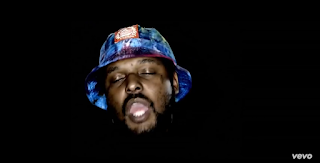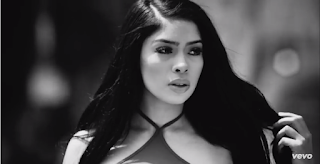For our music video our initial idea is the song Swimming Pools by Kendrick Lamar. This means that our video will be in the rap genre. I wanted to do this genre because it is a type of music I have an interest in and it also has conventions that are easy to follow and recreate.
One of the main attractions to this song in particular was the subject matter present and the way that it demonstrates this. It is a song that in the verses preaches the negatives of excessive drinking and the destructive influence of alcohol, however due to the catchy hook (or chorus) of the song it has become popular at parties and has become a drinking song. I feel that the way in which the song has been misinterpreted adds to the message in an ironic way. I think that this mixed message is something that could be translated into a music video. For example, if we depicted a house party where there are people having fun but also someone suffering from their drinking would illustrate this message effectively. This message would allow for us to create a thought provoking negative representation of young people who drink excessively, allowing for self reflection.
Another element that I think would make a good video and attracted me to the song was the idea of drinking itself. It is something that allows for a lot of creativity and gives context to more visceral imagery (Altman), in that more abstract ideas are more common when drinking. Another way in that it suits the vision my group has for the video is that drinking suits a more mixed narrative, straying from one meta-narrative (Lyotard). It would mean that we could have a main narrative which shows the dangers of drinking but also stray away from it frequently, depicting the fun that can also be had.
One thing that I would want to stray away from in comparison to the original video is the negative gender representation of women in the video. I don't feel that she adds anything to the video other than to serve the male gaze, an theory by the feminist Laura Mulvey. Even though this is a convention of the genre, I think it is one that has negative consequences upon an audience of largely young men and therefore I don't think it should be carried forward into our video.
Specific elements
One thing I would look to include in the music video would be something similar to this screenshot from Collard Greens by ScHoolboy Q. There is a part of the song where the main character's conscience is talking to himself. I feel having a green screen with the character talking to himself somewhat similar to this would be effective.
Another element I want to include is a flashback in the narrative, making it non linear. This would be on the lyrics:
"Now I done grew up 'round some people livin' their life in bottles
Granddaddy had the golden flask,"
I think portraying the powerful symbol of the golden flask would help to add depth to the character and also reinforce the message of the song with regards to drinking culture.
Another convention I think would be effective for the video is the screen flickering black at parts of the video that needs a fast paced feel. This is a convention of rap videos and I think it would help to create a party feel for the video when necessary.
An editing technique that we would definitely want to include is editing in time to the beat. The beat in this song is more prominent than some others and this makes it essential for this video so we don't lose the impact.
Roles:
Aidan Emberton - Print Media Editor/Director
Dan Grayer - Video Editor/Director
Charlie Adams - Cinematography/Director
We chose these roles as they fit the areas where we have the most ideas and most talent. We also decided to share the role of director as we all have creative ideas that we want to have inputted into the video.
An editing technique that we would definitely want to include is editing in time to the beat. The beat in this song is more prominent than some others and this makes it essential for this video so we don't lose the impact.
Roles:
Aidan Emberton - Print Media Editor/Director
Dan Grayer - Video Editor/Director
Charlie Adams - Cinematography/Director
We chose these roles as they fit the areas where we have the most ideas and most talent. We also decided to share the role of director as we all have creative ideas that we want to have inputted into the video.







